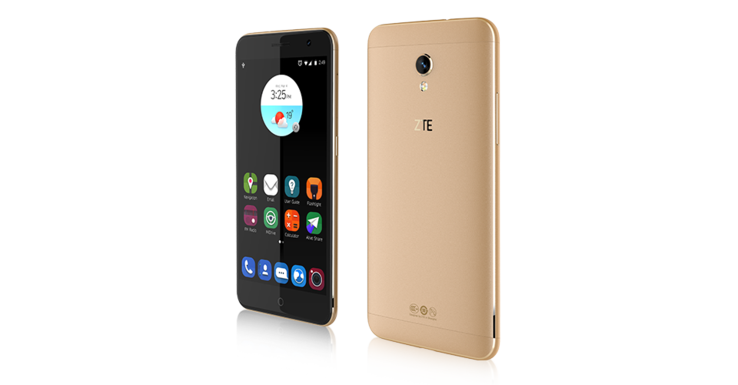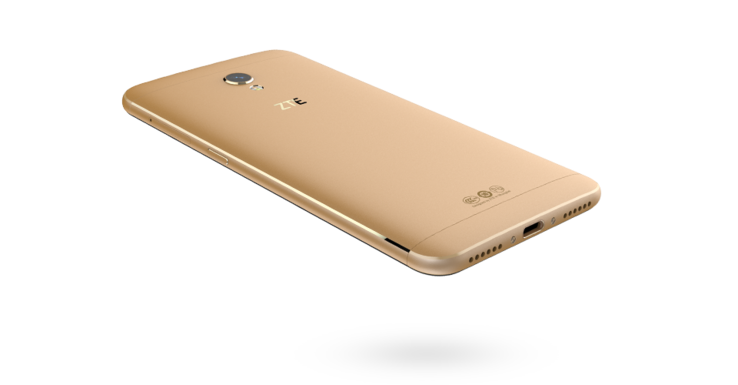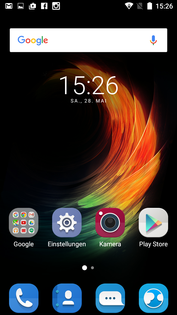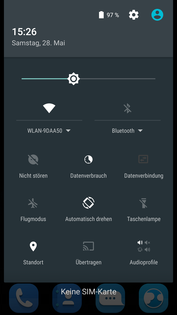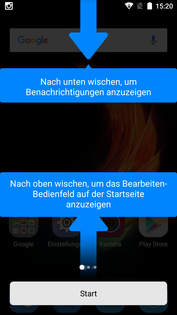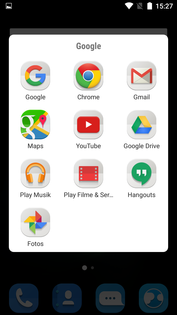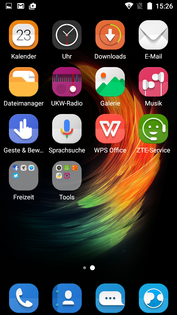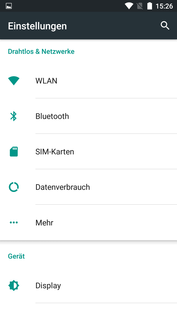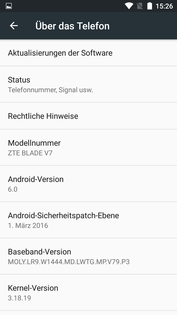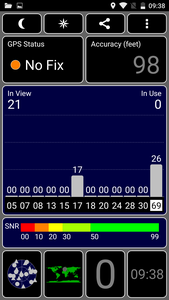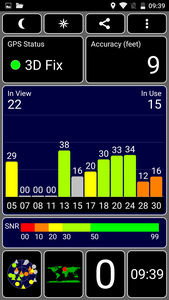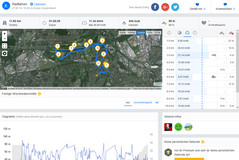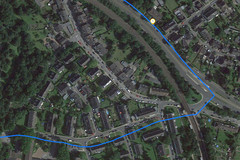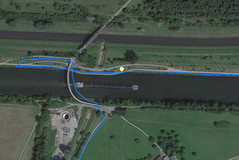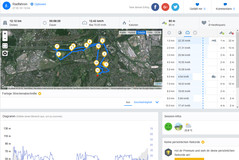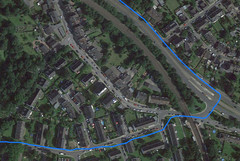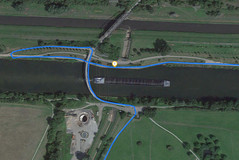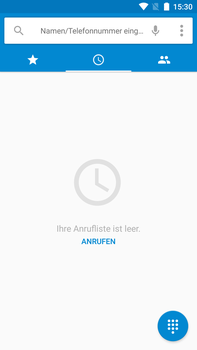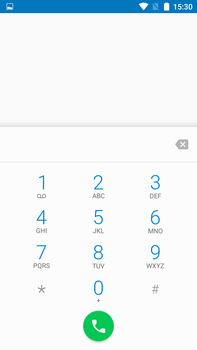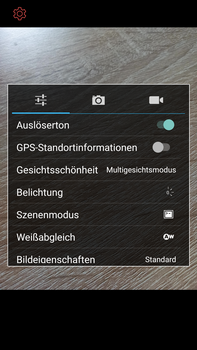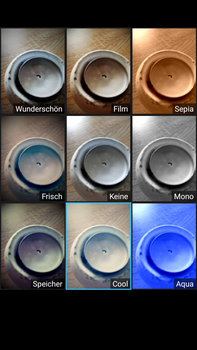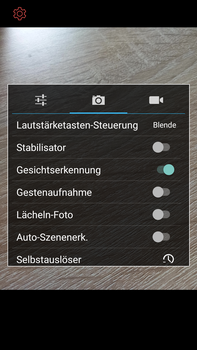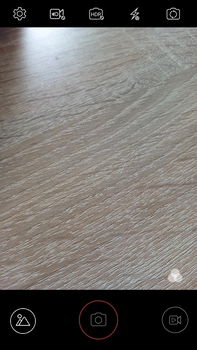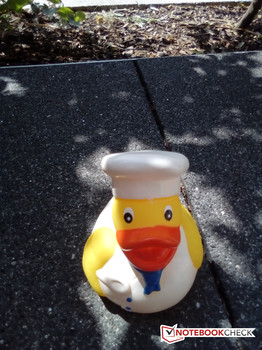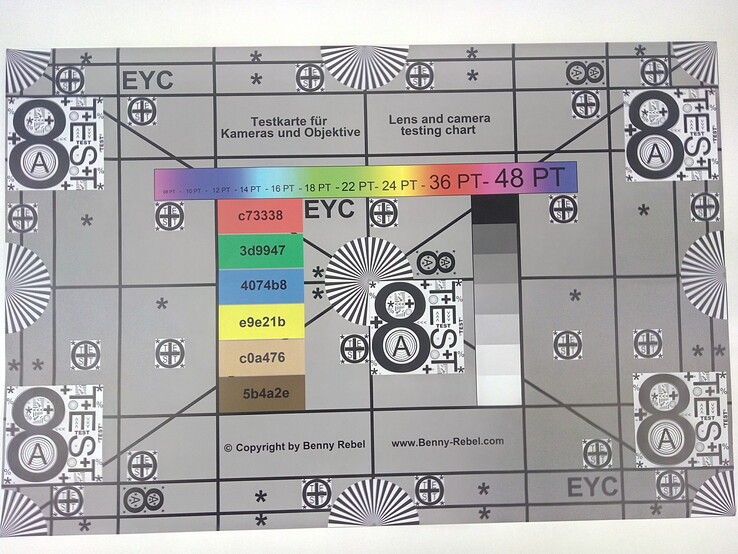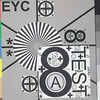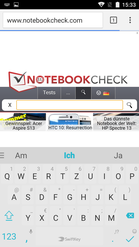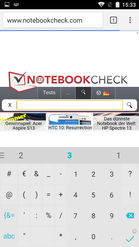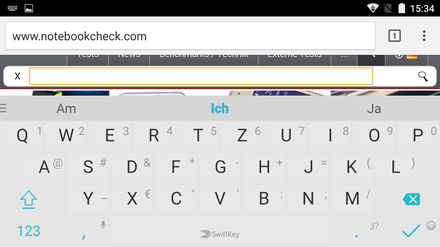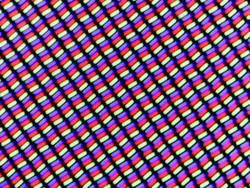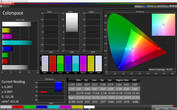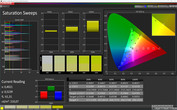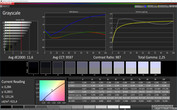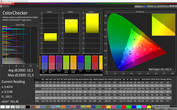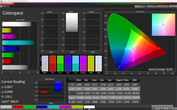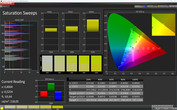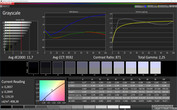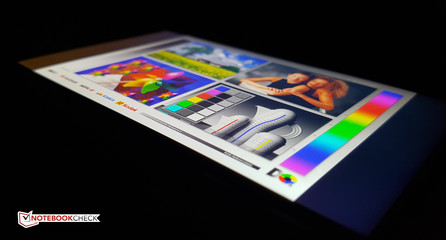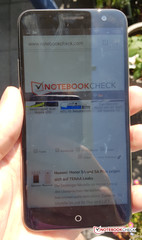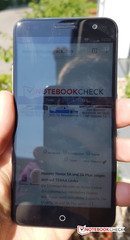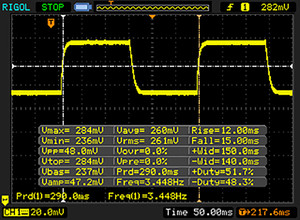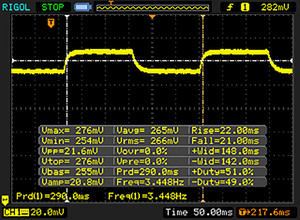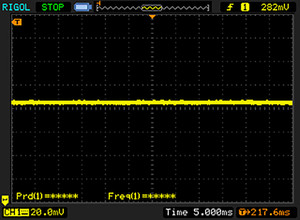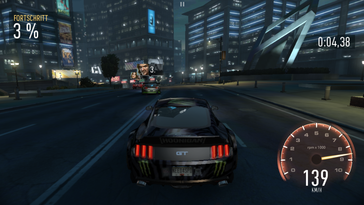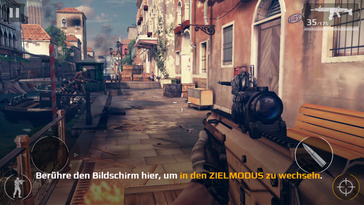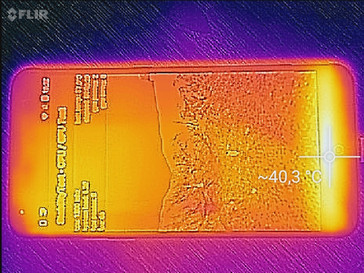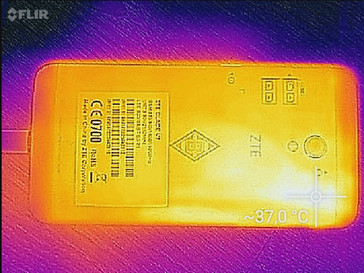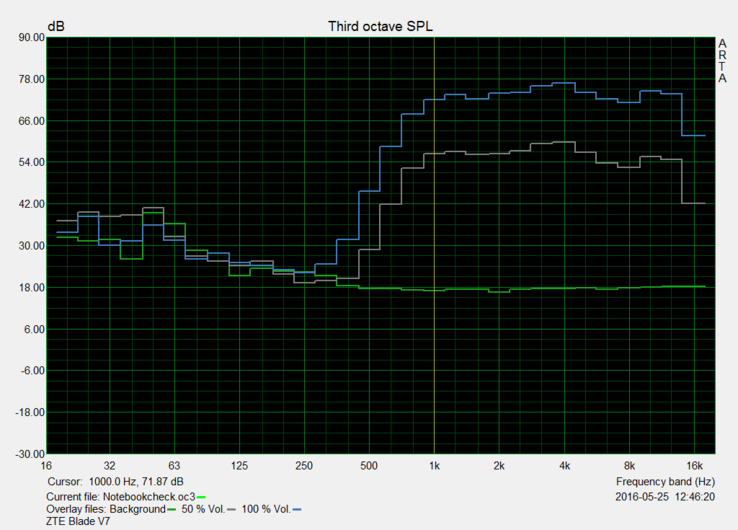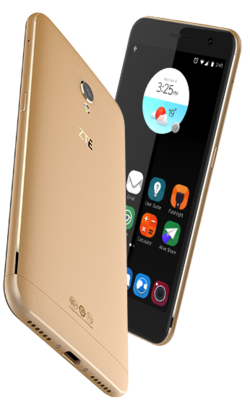ZTE Blade V7 Smartphone Review
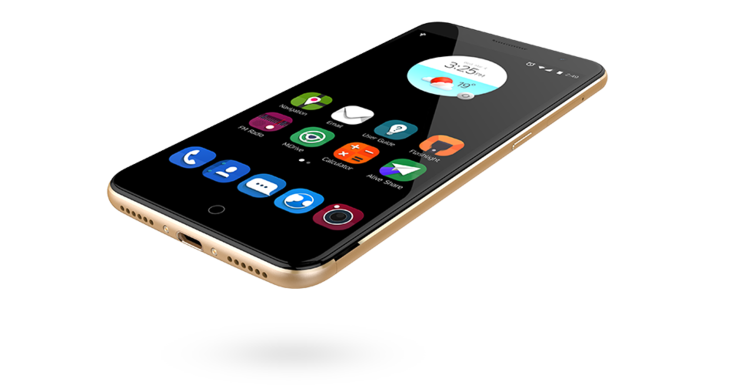
For the original German review, see here.
The Chinese manufacturer ZTE updates the mid-range of its Blade lineup for 2016 with the Blade V7. Compared with its predecessor, the LTE smartphone's screen diagonal has increased by 0.2 inches to 5.2 inches and now has a resolution of 1920x1080 pixels. The Blade V7 is powered by MediaTek's octa-core SoC that clocks at up to 1.3 GHz. 2 GB of working memory and 16 GB of flash memory that can be expanded by up to 32 GB via micro-SD cards complement it. The Blade V7 can shoot photos in either 13 or 5 megapixels. A 2540 mAh battery supplies the needed energy.
ZTE recommends a price of 249 Euros (~$280) for the Blade V7. Thus, the mid-range handset finds itself in a highly competitive price sector. The choice of potential rivals is correspondingly vast. We use the recently tested lite version of Huawei's P9, as well as Acer's Liquid Z630S and Honor's 5X for comparison. A street price of approximately 160 Euros (~$180) makes last year's ZTE Blade V6 model worth considering, and it is also listed as a comparison model.
Case
The largely aluminum casing is available in either gray or gold. Not only has the screen in the Blade V7 grown compared with the predecessor, but the handset's dimensions have also grown. Thanks to the display's relatively narrow edges, the screen-surface ratio is approximately 70.4%.
ZTE's smartphone made an attractive and high-quality first impression on us. The curved edges and the low height of almost 8 millimeters make ZTE's handset pleasant to hold. The controls for volume and power feature a solid build and have a well-defined pressure point. A beveled metal ring protects the lightly protruding camera lens on the back. The transitions between plastic parts for antenna technology and aluminum casing are very palpable, but the gaps are even. Cracking noises are not audible even under high pressure. The smartphone makes an overall solid and resistant impression.
Connectivity
ZTE's Blade V7 has the same storage capacity as most devices in this price range with 16 GB of internal eMMC memory. The user only has 10.99 GB available after initial setup. The non-removable data storage can be expanded thanks to the SD-card slot. According to the manufacturer, it supports cards with a capacity of up to 32 GB. However, the handset identified our 64 GB Toshiba Exceria Pro M401. Apps can be moved to the storage card via App2SD. The hybrid slot can also be used for a second SIM card.
The micro-USB in 2.0 standard can also be used as an OTG host (on-the-go) in addition to recharging the handset. Thus, peripherals like USB flash drives can be connected to the Blade V7 via an adapter. The mid-range smartphone also features FM radio, notification LED and Voice over LTE (VoLTE) besides Wi-Fi Direct. Wireless transmission of video materials (Miracast) to other monitors functioned impeccably in the test.
Software
ZTE relies on Google's latest Android 6.0 "Marshmallow" version as system software. However, the manufacturer has modified the operating system's user interface. Unlike the MiFavor UI version 3.0 that still visibly followed Google's stock Android in the settings menu and notification center, the app and folder design as well as the missing app drawer corresponds to the manufacturer's design language.
In addition to the visibly modified user interface, ZTE installs additional software features to the Android operating system. For example, applications can be launched when the screen is off via the "Smart Sense" function. The Internet browser can be opened by sketching an "O" on the screen when it is disabled. This functioned reliably in the test.
Communication & GPS
Two nano-SIM cards can be inserted simultaneously into the Blade V7. The LTE smartphone accesses the Internet at up to 150 MB/s (download) and 50 MB/s (upload) (LTE Cat.4) - that applies to both SIM-card slots. However, the frequency coverage of primarily the GSM and UMTS standards is relatively low - quad-band GSM and dual-band UMTS are supported. The LTE coverage is, however, available for all frequency bands (3, 7, 20) relevant in Germany. The somewhat outdated Bluetooth version 4.0 is present for wireless near field communication.
The integrated Wi-Fi module only supports the IEEE 802.11 b/g/n standards and consequently also only transmits in the 2.4 GHz frequency range. The Wi-Fi signal of our review sample was relatively unstable - connections were often disrupted. However, the signal strength was convincing. The attenuation of -44 dBm was low in the router's direct vicinity (Telekom Speedport, W921V). The signal strength clearly decreased on a patio about four meters away (-68 dBm).
ZTE's handset can be tracked via A-GPS. It quickly connected to satellites outdoors with an accuracy of 9 feet, i.e. roughly 3 meters. A permanent satellite connection could not be established indoors, but occasional tracking was quite possible. We compared the GPS module in the Blade V7 with Garmin's Edge 500 navigation system on our 12-kilometer bike test route. The smartphone exhibits a clear deviation of 290 meters on the total test route due to shortcuts.
Telephone & Call Quality
The call quality of the Blade V7 is good to very good. Voice is rendered clearly and our contact also described it as clearly intelligible. Annoying interruptions or reception issues did not occur in the test. In contrast to the earpiece, voice quality via speakers is relatively poor. The too quiet and lightly distorted transmission of conversations affected the intelligibility particularly during video calls via Skype.
The phone app corresponds to the stock version of Android 6.0. Besides a quick-dial feature, the app offers call lists and direct access to saved contacts.
Cameras
The rear-facing 13 MP camera has a wide aperture of f/2.2 and a phase detection auto-focus that should focus in "only" 0.3 seconds according to ZTE. A dual-LED flash is also installed, but an optical image stabilizer (OIS) is not present.
For a mid-range handset, the camera shoots compelling photos in good light conditions. Especially the high dynamic range (scene 1, bridge) strikes the eye compared with pictures taken with current flagship models of other manufacturers (Apple iPhone 6s Plus, Huawei P9). The photos tend to overexpose and look a bit blurry in unfavorable light conditions (sun, shade / scene 2, woods). ZTE's Blade is not very suitable for macro-photos - despite the phase detection auto-focus close-ups look blurred (scene 3, indoors). The aperture's light sensitivity is good; the photos look sufficiently bright even in low-light conditions.
The front-facing camera has a resolution of 5 MP. Selfies can be illuminated via a screen flash (white screen) rather than with an LED flash. The quality is decent and selfie-suitable. Videos can be recorded in 1080p at a frame rate of 30 fps.
The camera app is clearly arranged and offers different photo modes. Photos can also be taken without using the release via "SmartSense" gesture control.
Accessories & Warranty
Besides the smartphone, ZTE includes a modular power supply, micro-USB cable and instructions.
The Blade V7 comes with a 24-month warranty period.
Input Devices & Handling
The Blade V7's capacitive multi-touchscreen's accurate and smooth handling appealed to us in the test. The glass surface has a pleasant feel and has good gliding traits. ZTE preloads the keyboard with SwiftKey in addition to the classic stock Android keyboard ex-factory. In contrast to the cheaper Blade V7 lite model, ZTE does not install a fingerprint sensor.
Display
The IPS panel in the Blade V7 is furnished with LTPS (Low Temperature Poly Silicon) technology. The 5.2-inch screen has a resolution of 1080p and a pixel density of 424 PPI. That leads to a sharp reproduction of content.
The luminosity evaluation using the X-Rite i1Pro2 results in a maximum brightness of 420 cd/m². ZTE has thus clearly increased the screen's brightness of its 2016 model - one point that we criticized in the review of the predecessor last year. The Blade V7's illumination of 96% is also very homogeneous. There is hardly a difference in the more realistic APL50 test (Average Picture Level) where we measured a maximum rate of 411 cd/m².
| |||||||||||||||||||||||||
Brightness Distribution: 96 %
Center on Battery: 409 cd/m²
Contrast: 1076:1 (Black: 0.38 cd/m²)
ΔE ColorChecker Calman: 9.4 | ∀{0.5-29.43 Ø4.78}
ΔE Greyscale Calman: 11.6 | ∀{0.09-98 Ø5}
Gamma: 2.25
CCT: 9597 K
| ZTE Blade V7 IPS, 1920x1080, 5.2" | ZTE Blade V6 IPS, 1280x720, 5" | Acer Liquid Z630S IPS, 1280x720, 5.5" | Honor 5X IPS, 1920x1080, 5.5" | Huawei P9 Lite IPS, 1920x1080, 5.2" | HTC 10 Super LCD 5, 2560x1440, 5.2" | |
|---|---|---|---|---|---|---|
| Screen | -6% | 20% | 26% | 10% | 30% | |
| Brightness middle (cd/m²) | 409 | 336 -18% | 350 -14% | 535 31% | 505 23% | 445 9% |
| Brightness (cd/m²) | 411 | 315 -23% | 345 -16% | 521 27% | 468 14% | 434 6% |
| Brightness Distribution (%) | 96 | 81 -16% | 84 -12% | 85 -11% | 88 -8% | 93 -3% |
| Black Level * (cd/m²) | 0.38 | 0.39 -3% | 0.27 29% | 0.43 -13% | 0.74 -95% | 0.36 5% |
| Contrast (:1) | 1076 | 862 -20% | 1296 20% | 1244 16% | 682 -37% | 1236 15% |
| Colorchecker dE 2000 * | 9.4 | 8.29 12% | 4.7 50% | 4.88 48% | 4.1 56% | 2.8 70% |
| Colorchecker dE 2000 max. * | 17.6 | 8.5 52% | 8.66 51% | 5.8 67% | 5.8 67% | |
| Greyscale dE 2000 * | 11.6 | 8.57 26% | 5.6 52% | 5.2 55% | 4.9 58% | 3.7 68% |
| Gamma | 2.25 98% | 1.96 112% | 1.84 120% | 2.26 97% | 2.5 88% | 2.31 95% |
| CCT | 9597 68% | 8172 80% | 6795 96% | 7766 84% | 7116 91% | 7164 91% |
| Color Space (Percent of sRGB) (%) | 89.7 |
* ... smaller is better
The screen's good impression continues with the black level of 0.38 cd/m² (APL50: 0.39 cd/m²). Furthermore, the contrast of the IPS panel is very high thanks to LTPS technology (1:1076). However, the otherwise very good screen has to accept some criticism: Both the color and grayscale level accuracy is below the level of the comparison devices. The color temperature (9579 K) is clearly above the ideal rate (6500K), which results in a bluish tint on displayed content. The sRGB color-space coverage is good.
Thanks to the liquid crystal display's high brightness, content displayed on the screen remains legible even on sunny days. The viewing-angle stability is very good as is typical for IPS panels. Only minor brightness losses are seen in extreme viewing angles.
Display Response Times
| ↔ Response Time Black to White | ||
|---|---|---|
| 27 ms ... rise ↗ and fall ↘ combined | ↗ 12 ms rise | |
| ↘ 15 ms fall | ||
| The screen shows relatively slow response rates in our tests and may be too slow for gamers. In comparison, all tested devices range from 0.1 (minimum) to 240 (maximum) ms. » 67 % of all devices are better. This means that the measured response time is worse than the average of all tested devices (20.2 ms). | ||
| ↔ Response Time 50% Grey to 80% Grey | ||
| 43 ms ... rise ↗ and fall ↘ combined | ↗ 22 ms rise | |
| ↘ 21 ms fall | ||
| The screen shows slow response rates in our tests and will be unsatisfactory for gamers. In comparison, all tested devices range from 0.165 (minimum) to 636 (maximum) ms. » 70 % of all devices are better. This means that the measured response time is worse than the average of all tested devices (31.6 ms). | ||
Screen Flickering / PWM (Pulse-Width Modulation)
| Screen flickering / PWM not detected | |||
In comparison: 53 % of all tested devices do not use PWM to dim the display. If PWM was detected, an average of 8108 (minimum: 5 - maximum: 343500) Hz was measured. | |||
Performance
MediaTek's MT6753 installed in ZTE's Blade V7 is an upper mid-range ARM SoC (system-on-a-chip) from 2015. The eight CPU cores are based on the 64-bit capable Cortex A53 architecture and clock at up to 1.3 GHz.
The combination of an octa-core SoC and 2 GB of DDR3 RAM ensure a mostly smooth system and browser performance in routine use. However, occasional micro-stutters occur during multitasking, and the loading times are noticeably longer. The scores in the processor benchmarks are roughly on par with the comparison devices - in particular Acer based on the same SoC (CPU, GPU) achieves similar outcomes. Some scores of the Blade V7 are clearly below those of Acer's Liquid Z630S handset in graphics-driven benchmarks.
Compared with the predecessor, the performance of the installed flash memory has worsened in sequential read - Acer's Liquid 630S and Huawei's P9 lite also offer a better read rate than the Blade V7. ZTE's smartphone is on par with its rivals in both reading smaller data and its write performance. The memory-card slot in the mid-range handset achieves slightly below average access rates.
| AnTuTu v6 - Total Score (sort by value) | |
| ZTE Blade V7 | |
| Acer Liquid Z630S | |
| Honor 5X | |
| Huawei P9 Lite | |
| HTC 10 | |
| AnTuTu v5 - Total Score (sort by value) | |
| ZTE Blade V6 | |
| Geekbench 3 | |
| 64 Bit Single-Core Score (sort by value) | |
| ZTE Blade V7 | |
| ZTE Blade V6 | |
| Honor 5X | |
| Huawei P9 Lite | |
| HTC 10 | |
| 64 Bit Multi-Core Score (sort by value) | |
| ZTE Blade V7 | |
| ZTE Blade V6 | |
| Honor 5X | |
| Huawei P9 Lite | |
| HTC 10 | |
| 3DMark | |
| 1280x720 offscreen Ice Storm Unlimited Score (sort by value) | |
| ZTE Blade V7 | |
| ZTE Blade V6 | |
| Acer Liquid Z630S | |
| Honor 5X | |
| Huawei P9 Lite | |
| HTC 10 | |
| 1280x720 offscreen Ice Storm Unlimited Graphics Score (sort by value) | |
| ZTE Blade V7 | |
| ZTE Blade V6 | |
| Acer Liquid Z630S | |
| Honor 5X | |
| Huawei P9 Lite | |
| HTC 10 | |
| 1280x720 offscreen Ice Storm Unlimited Physics (sort by value) | |
| ZTE Blade V7 | |
| ZTE Blade V6 | |
| Acer Liquid Z630S | |
| Honor 5X | |
| Huawei P9 Lite | |
| HTC 10 | |
| 2560x1440 Sling Shot OpenGL ES 3.0 (sort by value) | |
| ZTE Blade V7 | |
| Acer Liquid Z630S | |
| Honor 5X | |
| Huawei P9 Lite | |
| HTC 10 | |
| 2560x1440 Sling Shot OpenGL ES 3.0 Graphics (sort by value) | |
| ZTE Blade V7 | |
| Acer Liquid Z630S | |
| Honor 5X | |
| Huawei P9 Lite | |
| HTC 10 | |
| 2560x1440 Sling Shot OpenGL ES 3.0 Physics (sort by value) | |
| ZTE Blade V7 | |
| Acer Liquid Z630S | |
| Honor 5X | |
| Huawei P9 Lite | |
| HTC 10 | |
| GFXBench (DX / GLBenchmark) 2.7 | |
| T-Rex Onscreen (sort by value) | |
| ZTE Blade V7 | |
| ZTE Blade V6 | |
| Acer Liquid Z630S | |
| Honor 5X | |
| Huawei P9 Lite | |
| HTC 10 | |
| 1920x1080 T-Rex Offscreen (sort by value) | |
| ZTE Blade V7 | |
| ZTE Blade V6 | |
| Acer Liquid Z630S | |
| Honor 5X | |
| Huawei P9 Lite | |
| HTC 10 | |
| GFXBench 3.0 | |
| on screen Manhattan Onscreen OGL (sort by value) | |
| ZTE Blade V7 | |
| ZTE Blade V6 | |
| Acer Liquid Z630S | |
| Honor 5X | |
| Huawei P9 Lite | |
| HTC 10 | |
| 1920x1080 1080p Manhattan Offscreen (sort by value) | |
| ZTE Blade V7 | |
| ZTE Blade V6 | |
| Acer Liquid Z630S | |
| Honor 5X | |
| Huawei P9 Lite | |
| HTC 10 | |
| GFXBench 3.1 | |
| on screen Manhattan ES 3.1 Onscreen (sort by value) | |
| ZTE Blade V7 | |
| Huawei P9 Lite | |
| HTC 10 | |
| 1920x1080 Manhattan ES 3.1 Offscreen (sort by value) | |
| ZTE Blade V7 | |
| Huawei P9 Lite | |
| HTC 10 | |
| PCMark for Android - Work performance score (sort by value) | |
| ZTE Blade V7 | |
| Acer Liquid Z630S | |
| Honor 5X | |
| Huawei P9 Lite | |
| HTC 10 | |
| AndroBench 3-5 | |
| Sequential Write 256KB SDCard (sort by value) | |
| ZTE Blade V7 | |
| Huawei P9 Lite | |
| HTC 10 | |
| Sequential Read 256KB SDCard (sort by value) | |
| ZTE Blade V7 | |
| Huawei P9 Lite | |
| HTC 10 | |
| Random Write 4KB (sort by value) | |
| ZTE Blade V7 | |
| ZTE Blade V6 | |
| Acer Liquid Z630S | |
| Honor 5X | |
| Huawei P9 Lite | |
| HTC 10 | |
| Random Read 4KB (sort by value) | |
| ZTE Blade V7 | |
| ZTE Blade V6 | |
| Acer Liquid Z630S | |
| Honor 5X | |
| Huawei P9 Lite | |
| HTC 10 | |
| Sequential Write 256KB (sort by value) | |
| ZTE Blade V7 | |
| ZTE Blade V6 | |
| Acer Liquid Z630S | |
| Honor 5X | |
| Huawei P9 Lite | |
| HTC 10 | |
| Sequential Read 256KB (sort by value) | |
| ZTE Blade V7 | |
| ZTE Blade V6 | |
| Acer Liquid Z630S | |
| Honor 5X | |
| Huawei P9 Lite | |
| HTC 10 | |
| Mozilla Kraken 1.1 - Total (sort by value) | |
| ZTE Blade V7 | |
| ZTE Blade V6 | |
| Acer Liquid Z630S | |
| Honor 5X | |
| Huawei P9 Lite | |
| HTC 10 | |
| Octane V2 - Total Score (sort by value) | |
| ZTE Blade V7 | |
| ZTE Blade V6 | |
| Acer Liquid Z630S | |
| Honor 5X | |
| Huawei P9 Lite | |
| HTC 10 | |
| JetStream 1.1 - Total Score (sort by value) | |
| ZTE Blade V7 | |
| Acer Liquid Z630S | |
| Honor 5X | |
| Huawei P9 Lite | |
| HTC 10 | |
* ... smaller is better
Games
The graphics unit installed in MediaTek's SoC is an ARM Mali-T720 MP4 with four clusters and a clock rate of 600 MHz. The GPU's power is enough to cope with current games from the Android Play Store, such as Need for Speed No Limits, mostly without problems. However, stutters and delays sometimes occurred in the first-person shooter Modern Combat 5 during gameplay.
Emissions
Temperature
While the predecessor got relatively hot with load temperatures of over 40.3 °C, ZTE's Blade V7 remains pleasantly cool at a maximum of 36.9 °C. However, the maximum temperature does not change much in idle mode. In return, the waste heat is distributed considerably less evenly over the casing.
(+) The maximum temperature on the upper side is 36.9 °C / 98 F, compared to the average of 35.2 °C / 95 F, ranging from 21.9 to 247 °C for the class Smartphone.
(+) The bottom heats up to a maximum of 35.2 °C / 95 F, compared to the average of 34 °C / 93 F
(±) In idle usage, the average temperature for the upper side is 33.7 °C / 93 F, compared to the device average of 32.9 °C / 91 F.
Speaker
The mono speaker in the Blade V7 is situated behind milled boreholes on the casing's lower edge, and it has been developed in cooperation with the French audio expert Arkamys. However, the sound quality is not convincing. Tones from the mid and high frequencies characterize the sound impression as expected. The Pink Noise diagram clearly illustrates that basses are virtually inaudible, but the trebles are very linear.
Furthermore, the speaker only offers average sound and achieves a maximum volume of 85 dB(A) in the test. A satisfactory rate that is absolutely sufficient for everyday use. However, the sound becomes tinnier the higher the volume.
Playback via the 3.5 mm jack is clear and transmits an impeccable audio signal.
Energy Management
Power Consumption
The idle energy management of the Blade V7 is exemplary. Furthermore, rates of below 1 watt between minimum and maximum consumption are very consistent. Despite high-performance hardware components, ZTE has obviously optimized the Blade V7's energy management compared with the Blade V6. The load power consumption increases to just below 6 watts - an average rate.
| Off / Standby | |
| Idle | |
| Load |
|
Key:
min: | |
| ZTE Blade V7 2540 mAh | ZTE Blade V6 mAh | Acer Liquid Z630S 4000 mAh | Honor 5X 3000 mAh | Huawei P9 Lite 3000 mAh | HTC 10 3000 mAh | |
|---|---|---|---|---|---|---|
| Power Consumption | -53% | -93% | -62% | -46% | -58% | |
| Idle Minimum * (Watt) | 0.73 | 1.2 -64% | 1.82 -149% | 0.87 -19% | 0.73 -0% | 0.68 7% |
| Idle Average * (Watt) | 0.92 | 1.8 -96% | 2.35 -155% | 2.08 -126% | 2.09 -127% | 1.49 -62% |
| Idle Maximum * (Watt) | 0.93 | 2.1 -126% | 2.6 -180% | 2.22 -139% | 2.11 -127% | 1.91 -105% |
| Load Average * (Watt) | 4.47 | 4.1 8% | 3.69 17% | 5.26 -18% | 4.15 7% | 7.4 -66% |
| Load Maximum * (Watt) | 5.96 | 5.1 14% | 5.98 -0% | 6.34 -6% | 5.05 15% | 9.71 -63% |
* ... smaller is better
Battery Runtime
The non-removable battery in ZTE's Blade V7 has a nominal output of 2540 mAh. That is a bit less than the batteries in the rivals. The mid-range handset takes the last place with 8 hours and 38 minutes in our practical Wi-Fi test using a brightness of 150 cd/m² - which is a good rate for the battery's size. ZTE has managed to also clearly improve the battery life of its latest Blade V7 compared with the Blade V6 (2200 mAh).
The Blade V7 only needs 2 hours and 9 minutes to recharge a completely depleted battery with the included 7.5-watt power supply (1.5 A, 5 V) despite the absence of Quick Charge technology.
| ZTE Blade V7 2540 mAh | ZTE Blade V6 mAh | Acer Liquid Z630S 4000 mAh | Honor 5X 3000 mAh | Huawei P9 Lite 3000 mAh | HTC 10 3000 mAh | |
|---|---|---|---|---|---|---|
| Battery runtime | ||||||
| WiFi v1.3 (h) | 8.7 | 6.7 -23% | 11.4 31% | 10.7 23% | 10.1 16% | 6.9 -21% |
Pros
Cons
Verdict
ZTE's Blade V7 is a very good looking, well-built mid-range handset with a balanced pro and con profile. The newest mid-price smartphone in the Blade lineup shines with a bright, high-resolution IPS panel and a very good mid-range camera that can throughout compete with more expensive rivals particularly with its dynamic range. On the other hand, the speaker's sound is unsatisfactory, and the screen's color accuracy is below average. The battery's nominal output of 2540 mAh is also a bit low, and the configuration could be better.
Compared with ZTE's Blade V6, this year's mid-range handset from the Blade lineup presents many improvements. However, the Blade V7 has inherited some points of criticism (color accuracy, speaker quality, Wi-Fi module).
ZTE's Blade V7 is a good all-round handset from the mid-price range where great importance was placed on looks. Anyone who does not need a stylish aluminum casing and 2.5D glass might find an alternative in equally priced devices with better configuration and battery life (Acer Liquid Z630S).
ZTE Blade V7
- 06/03/2016 v5.1 (old)
Marcus Herbrich




